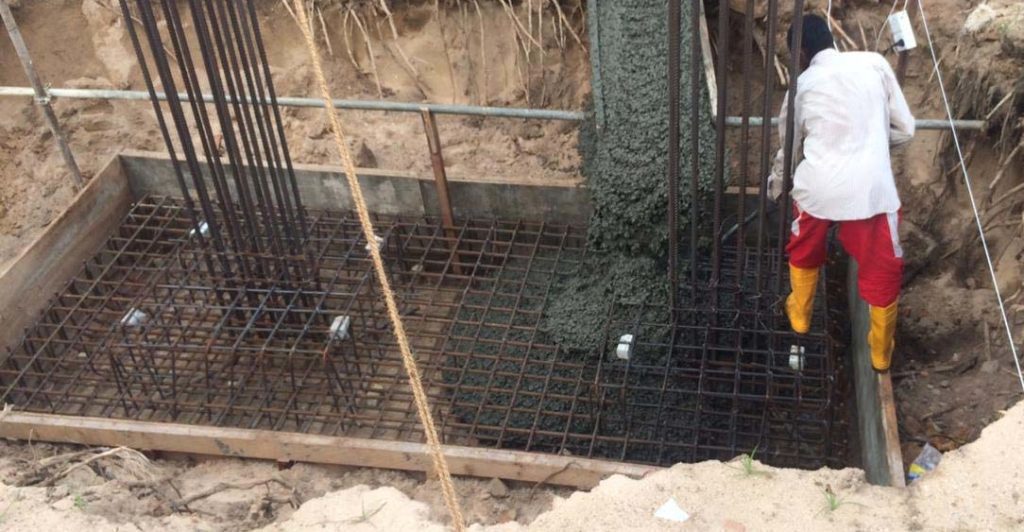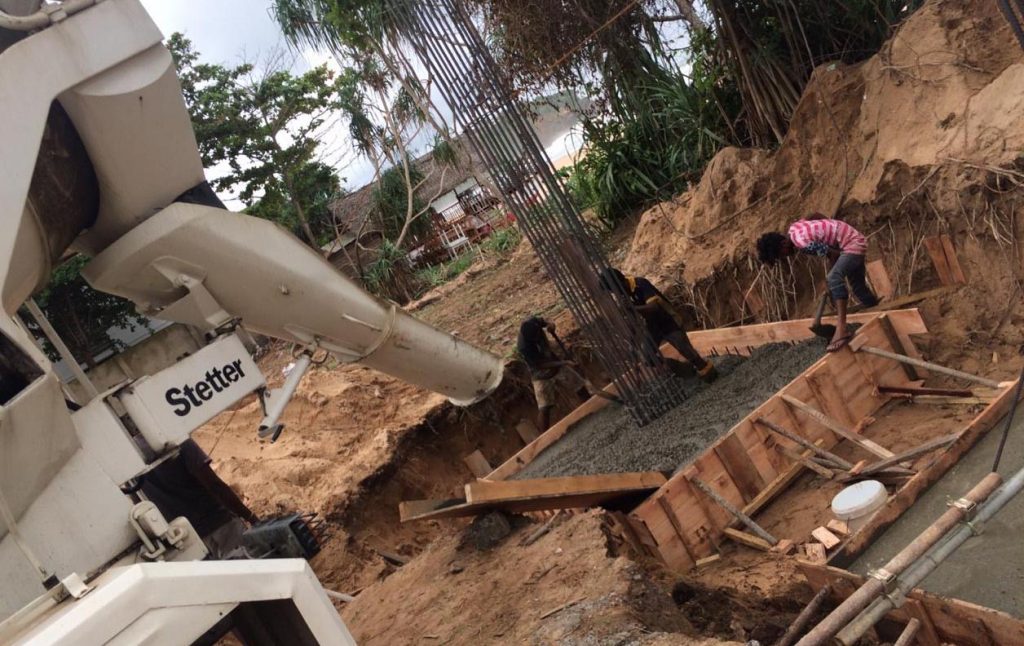The settlement of shallow foundations can be divided into two categories based on the time frame of occurrence. The settlement of a structure cannot be avoided even we build the structure on a rock.
In the pile design also a certain amount of settlement could occur due to the failures of construction with the increase of the loading.
Buildings constructed on a soil definitely settle and it should be within the limit considered in the recommendation to foundation design.
The designer’s responsibility is to maintain a uniform settlement over the building as the different settlement creates issues.
Soil act as a spring which referred to as by subgrade reaction in calculations and does the vertical movement of the structure with the application of loads. As explained above, it could occur in two-stage as below.
- Elastic settlement or immediate settlement
- Consolidation settlement
In this article, we discussed the elastic settlement or the immediate settlement of shallow foundations with a worked example.
Elastic Settlement of Shallow Foundations
Elastic settlement occurs during the construction of the structure and immediately after the construction of the structure.
However, consolidation settlement occurs over a period of time. It occurs due to the reduction of the pour water pressure in the saturated clay. Consolidation settlement occurs in two phases namely they are primary and secondary consolidation.
The calculation of the elastic settlement is discussed in this article. The method of calculating elastic settlement based on the theory of elasticity is discussed with the worked example for ease of understanding.
Method of Calculation of Elastic Settlement
Elastic Settlement, Se, as per the book Principles of Foundation Engineering
Se =q0(αB’)[(1-μ2s)/Es]IsIf
Where,
q0 – Net applied pressure on the foundation
μs – Poisson’s ratio of soil
Es – Average modulus of elasticity of the soil under the foundation, measured form Z=0 to about Z =4B
B’ – B/2 for the center of the foundation and ‘B’ for conner of foundation
Is – Shape factor (Steinbrenner, 1934)
Is = F1 + [(1-2μs )/(1- μs )]F2
F1 = (1/π)[A0 + A1]
F2 = (n’/2π) tan-1A2
A0 = m’ ln { [ 1+(m’2+1)0.5](m’2 + n’2)0.5 } / { m'[1+(m’2 +n’2 + 1)0.5]}
A1 = ln { [ m’ + (m’2+1)0.5 ] (1 + n’2)0.5 } / [m’+(m’2 +n’2 + 1)0.5]
A2 = m’ / [ n’ (m’2 +n’2 + 1)0.5 ]
If = depth factor (Fox, 1948) = f (Df/B, μs , and L/B
α = a factor that depends on the location on the foundation where settlement is being calculated
Following values are used to calculated the settlement at the center of the foundation.
α = 4, m’ = L/B, and n’ = H / (B/2)
Settlement at the corner of the foundation can be calculated using follwining values.
α = 1, m’ = L/B, and n’ = H / B
Due to the existance of deffenet layers of soil under the foundation, Es will vary layer to layer. Weighted averation of the Es is considered for the calculations as recommended by Bowels (1987). Es can be calculated following equation.
Es = [ ∑ Es(i) ∆z ] / Z0
Where,
Es(i) = soil modulus of elasticity within a depth ∆z
Z0 = H or 5B, whichever is smaller
The above equation and theories are extracted from the book Principles of Foundation Engineering.
The Wikipedia article on Foundation (Engineering) discusses the type of foundations to be used in construction.
Worked Example Calculation of Settlement of Shallow Foundations at the Center
Data
- Dimensions of foundation 1.5m x 2m
- Net applied pressure on the foundation, q0 = 175 kN/m2
- Poisson’s ratio of soil μs = 0.3

B = 1.5 m
L = 2m
Average, Es
Es = ( 8000 x 2 + 12000 x 2 + 10000 x 2) / 6 = 10000 kN/ m2
α = 4
m’ = L/B = 2 / 1.5 = 1.333
n’ = H / (B/2) = 6 / (1.5/2) = 8
F1 and F2 can be calculated from the above equations after calculating A0 , A1, and A2. Or the tables given in the book Principles of foundation engineering could be referred.
A0 = m’ ln { [ 1+(m’2+1)0.5](m’2 + n’2)0.5 } / { m'[1+(m’2 +n’2 + 1)0.5]}
A0 = 1.333 x ln { [ 1+(1.3332+1)0.5](1.3332 + 82)0.5 } / { 1.333[1+(1.3332 +82 + 1)0.5]}
A0 = 0.760
A1 = ln { [ m’ + (m’2+1)0.5 ] (1 + n’2)0.5 } / [m’+(m’2 +n’2 + 1)0.5]
A1 = ln { [ 1.333 + (1.3332+1)0.5 ] (1 + 82)0.5 } / [1.333+(1.3332 +82 + 1)0.5]
A1 = 0.934
A2 = m’ / [ n’ (m’2 +n’2 + 1)0.5 ]
A2 = 1.333 / [ 8 (1.3332 +82 + 1)0.5 ]
A2 = 0.020
F1 = (1/π)[A0 + A1] = (1/π)[0.760 + 0.934] = 0.539
F2 = (n’/2π) tan-1A2
Firstly, calcuate the tan-1A2 in degrees and it conver to radins
tan-1A2 = tan-1(0.02) = 1.1460
Radian value = 1.1460 x ( π / 180 ) = 0.02
F2 = (n’/2π) tan-1A2 = (8 / 2π) x 0.02 = 0.025
Is = F1 + [(1-2μs )/(1- μs )]F2 = 0.539 + [(1-2×0.3 )/(1- 0.3 )] x 0.025 = 0.553
If can be evaluated from the Table given in the principles of foundation engieering.
For μs = 0.3, Df / B = 1/1.5 = 0.667 and B/L = 1.5/2 = 0.75
If = 0.755
Foundation Settlement
Se =q0(αB’) [(1-μ2s) / Es ]IsIf
at center of the foundaiton
Se =q0(αB/2)[(1-μ2s)/Es]IsIf = 175(4×1.5/2)[(1-0.32)/10000] x 0.553 x 0.755 = 0.02m
Settlement of the foundation is 20mm.
Reference: Principles of Foundation Engineering


